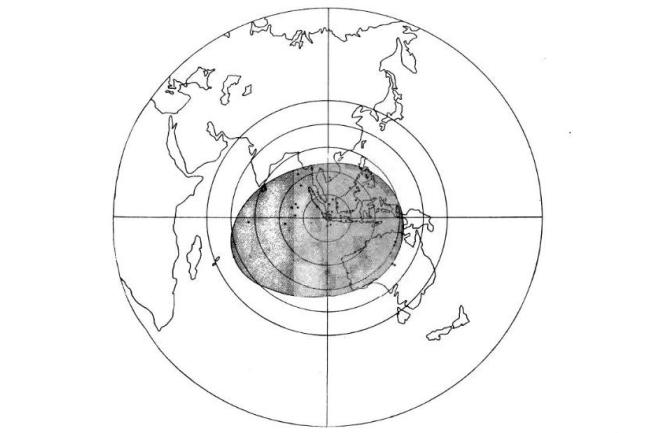Send Message to lkyng1s
Random useless facts v2
Sorry guys. Deleted the old string by accident.
Just a a place to post useless information and trivia. Who knows, we may learn something.
Gayboystube wide selection of gaytube real user submitted gay porn community specializing in gay porn videos the gayboytube.com next generation in gay teen porn entertainment
Canada and Denmark look to end their long-running dispute over Hans Island
A 50-year-long border dispute over an uninhabited Arctic island is drawing to a close as Denmark and Canada agree to end the so-called "Whisky War".
The NATO allies have been engaged in a — mostly good-spirited — squabble over Hans Island, situated at equal distance between Greenland and Canada's Ellesmere Island, since 1971, when their rival claims first came to light at a bilateral meeting to discuss territorial boundaries.
Since the 1980s, officials, scientists and soldiers from Denmark and Canada have visited the barren island, taking turns at removing the other country's flag and raising their own.
Their dispute over the island came to wider attention after media reports of an unusual tradition where visitors would leave a bottle of either Canadian whisky or Danish schnapps for their rivals to find on their next visit.
The end of the Whisky War, as it was nicknamed by media, comes largely as a symbolic act of diplomacy designed to avoid tensions in the high north.
Waiting on parliamentary approval
In 2018, the two countries decided to establish a joint working group to resolve the dispute, ending their decades-long "agree to disagree" policy.
That deal will be formally signed by ministers from both countries after parliamentary approval.
Canada and Denmark will divide the 1.2-square-kilometre island into two, almost equally large parts, along a naturally occurring cleft on the rocky outcrop, according to a deal published by the Danish Foreign Ministry on Tuesday.
With the deal, Canada and Denmark have established the world's longest maritime border of 3,882km spanning from the Lincoln Sea in the north to the Labrador Sea in the south, the foreign ministry said.
ABC/wires
www.sciencealert.com. Dec.12 2017
People Who Constantly Point Out Grammar Mistakes Are Pretty Much Jerks, Scientists Find.
Scientists have found that people who constantly get bothered by grammatical errors online have "less agreeable" personalities than those who just let them slide.
And those friends who are super-sensitive to typos on your Facebook page? Psychological testing reveals they're generally less open, and are also more likely to be judging you for your mistakes than everyone else.
In other words, they're exactly who you thought they were.
10 Historical Figures Who Were Really Bad At Spelling.
1. JANE AUSTEN
2. GEORGE WASHINGTON
3. WINSTON CHURCHILL
4. AGATHA CHRISTIE
5. ANDREW JACKSON
6. ALBERT EINSTEIN
7. ERNEST HEMINGWAY
8. F. SCOTT FITZGERALD
9.WILLIAM BUTLER YEATS
10.DAN QUAYLE
Very great blog Very informative genial ????
Krakatoa lithograph
Loudest sound
On August 27, four huge explosions occurred at 5:30, 6:44, 10:02, and 10:41 a.m., triggering tsunamis and throwing much of the island skyward. The one at 10:02 was the largest, and was heard in Perth, Western Australia, 3100 kilometres away, and across the Indian Ocean on Rodrigues Island, near Mauritius, 4825 kilometres away. People there thought nearby ships were firing their guns.
No survivors remained on Sebesi Island, about 13 kilometres away. About three thousand people had lived there. No one really knows how many people died. Reports came in up to a year later of skeletons floating on rafts of volcanic pumice, washing up on the east African coast.
Weather patterns and temperatures did not return to normal for five years after the Krakatoa eruption.
A barometer at the Batavia gasworks (160 kilometres away from Krakatoa) registered the ensuing spike in pressure at over 63.5 millimetres of mercury, which converts to over 172 decibels of sound pressure, an unimaginably loud noise. To put that in context, if you were operating a jackhammer you’d be subject to about 100 decibels. The human threshold for pain is near 130 decibels, and if you had the misfortune of standing next to a jet engine, you’d experience a 150 decibel sound. (A 10 decibel increase is perceived by people as sounding roughly twice as loud.) The Krakatoa explosion registered 172 decibels at 160 kilometres from the source.

Six hours and 47 minutes after the Krakatoa explosion, a spike of air pressure was detected in Calcutta. By 8 hours, the pulse reached Mauritius in the west and Melbourne and Sydney in the east. By 12 hours, St. Petersburg noticed the pulse, followed by Vienna, Rome, Paris, Berlin, and Munich. By 18 hours the pulse had reached New York, Washington DC, and Toronto. Amazingly, for as many as 5 days after the explosion, weather stations in 50 cities around the globe observed this unprecedented spike in pressure re-occuring approximately every 34 hours, roughly how long it takes sound to travel around the planet.
A map showing the area in which the Krakatoa explosion was heard.
(2005) Krakatoa - The Day the World Exploded
• https://ca1lib.org/book/1805707/906f5e
(1884) The Krakatoa Eruption - Nature Volume 29; Issue 746
• https://booksc.org/book/10217051/e1b0cf